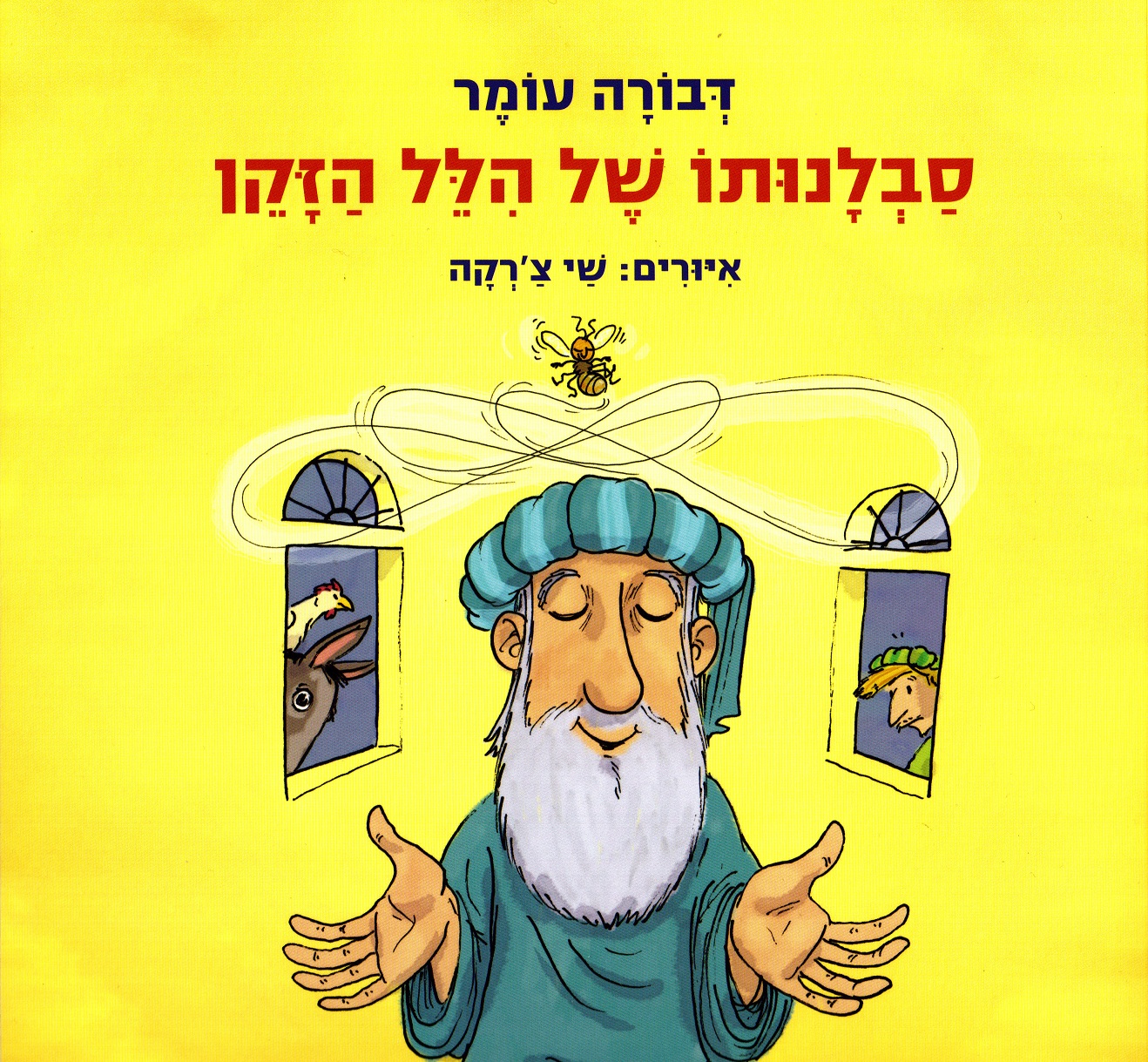סבלנותו של הלל הזקן
דבורה עומר
תרגום לאנגלית של ההצעות להורים המודפסות בדפים האחרונים של הספר
The Patience of Hillel the Elder / Dvora Omer (Based on a Talmudic tale)
Dear Parents,
Hillel the Elder
Hillel the Elder was a famous Jewish leader and a renowned sage and scholar during the time of the Mishnah, and served as head of the Sanhedrin. The Sanhedrin was a great council that governed the nation. Hillel’s deputy was his friend, Shammai. Hillel was known by the respect with which he treated others, by his modesty and by the moderation with which he set forth Jewish law. Because of these characteristics his rulings were accepted, and they are acknowledged to this day.
Tales of our sages ("Chazal") often teach us about people whose lives serve as models and whose behavior is exemplary. The story "The Patience of Hillel the Elder" appears in the Babylonian Talmud, Masechet Shabbat, page 31. The renowned Israeli author Dvora Omer adapted this tale for young children.
One who with difficulty gets angry, and is easily appeased
The man who tried to annoy Hillel the Elder chose an inconvenient time – just before the start of the Sabbath, while Hillel was washing himself – and a particularly rude topic – unusual physical appearances. He approached him and yelled disrespectfully: “Who here is Hillel?”, and when Hillel came out from the bath house, he asked him about the shape of the heads of immigrants from Babylonia. This question should have offended Hillel personally, as he himself had arrived from Babylonia just several years before. And yet, Hillel responded with moderation and to the point.
The Mishnah teaches us to pay heed to the ease with which people become angry and the ease with which they are appeased. “One who with difficulty gets angry, and is easily appeased" (Pirkei Avot, ch. 5, verse 14) refers to a person who remains calm and cool-headed.
How does Hillel keep his mild temperament? Perhaps he believes in the good in people, and accepts what they do good-naturedly. What do you think?
Family Activities
- Notice the fly in the illustrations that accompany the story: It, too, tries to irritate, and usually, it succeeds. Try to tell the story with your children from the fly's vantage point.
- In order to shake Hillel out of his tranquility the man chose to approach him at a very inconvenient time of day: just before the start of the Sabbath. Are there times when it is not advisable to ask your children questions or to request something of them? Do your children know when it is not advisable to ask you questions?
- You can act out the story with your children. You can wrap the head of “Hillel” with a large towel, and add a tub and bath accessories. The “friend” can look for Hillel, call out to him and make up strange questions of his own. You are invited to photograph your skit and send the pictures to the Sifriyat Pijama website: pj./.
- In the story a man approaches Hillel and attempts to provoke him. Coping with provocation is a task required of almost all young children. The story about Hillel may present an opportunity for family discussion on the topic of teasing and provocation, and an invitation for your children to describe how they know when one child is trying to provoke another, and what one can do when this happens.
- You can make your own bubble bath: Take some old soap and shred it with a grater into a bowl. Add warm water and whip it with a mixer until you get thick suds. You can add a few drops of food coloring to the suds. The children will enjoy bathing with the special suds they made with you!
- Hillel was an exemplary figure who knew how to control his anger. What helps us overcome our anger? You can prepare a "Hillel doll" with your children. The children can ask for advice from the doll and tell it what helps them get over their anger. Make the doll from an old sock, on which you can draw a mouth, glue two eyes, and add white hair from cotton wool. You can even make a hat for the doll. Place your hand inside the sock, and have the doll answer the children’s or parents’ questions and make up new stories. This is also an opportunity for you to share with your children ways that help you cope with anger when it arises.





